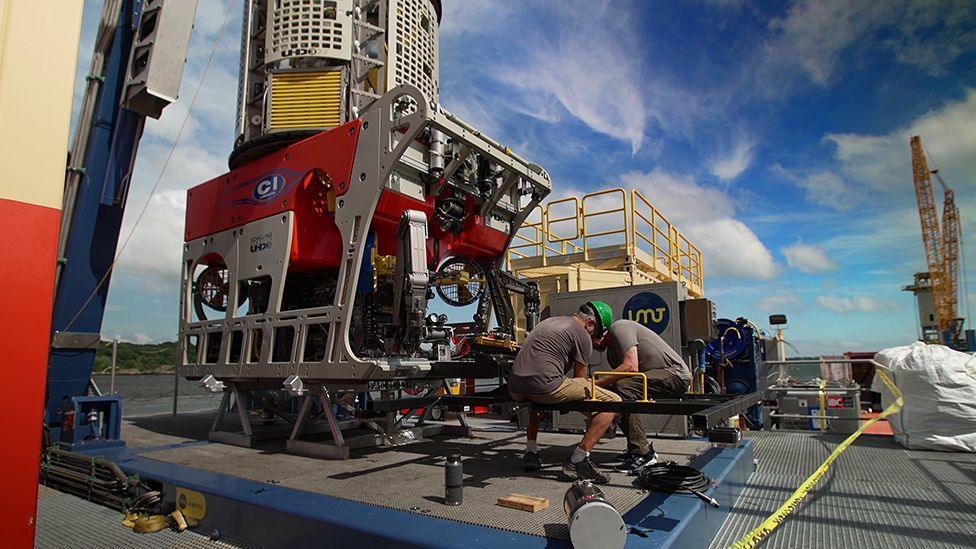Are we about to see the wreck of Titanic in the clearest detail ever?

The team hope to keep the robotic vehicles in the water for 20 days to gather the most information possible
- Published
A mission to gather the most detailed photos of the Titanic wreck ever has set sail.
A group of scientists, historians and imaging experts will be using the best technology available to search every inch of the famous shipwreck.
However, they will not be going down to the wreckage.
Two six-tonne robotic vehicles will dive to the bottom of the ocean to capture millions of photographs and information to create a 3D model of the debris.
The information will help the researchers learn more about its sinking.
The Titanic was as tall as Nelson's Column in London.
More Titanic stories:
- Published19 October 2018
- Published10 August 2020
- Published11 April 2012
The wreck has previously been created as a full-sized digital scan.
Using deep-sea mapping a 3D scan was created which can explore the wreck from all angles.
However, it's hoped that this mission will provide even more detail as the camera technology being used can produce clearer images of what's left of the famous ship.
Evan Kovacs, who's in charge of the imaging programme said: "we should be able to capture Titanic and the wreck site in as close to digital perfection as you can get. You would be able to quite literally count grains of sand".
How did the Titanic sink?
RMS Titanic at Southampton Docks April 1912
The Titanic is one of the most well known ships in the world.
The ship was built in Belfast and at the time, was the biggest ever made. Some even described it as "unsinkable".
During the ship's first voyage in 1912, the Titanic was travelling from Southampton in England to New York City in the United States.
During its journey across the Atlantic Ocean, the ship collided with an iceberg, which tore a hole along the side of the ship's metal hull.
What happened during the sinking of the Titanic?
There should have been enough spaces for 1,000 passengers on the lifeboats
After hitting the iceberg the ship started to take on thousands of tonnes of sea water through holes in its side.
The captain, Captain Edward Smith, ordered for the lifeboats to be lowered and for women and children to take the first seats.
There should have been enough spaces for 1,000 passengers (not enough for all the people on board) but some of the boats were sent off before they were full.
Seven hundred passengers were rescued, but more than 1,500 passengers lost their lives.
The ship is thought to have split in two as it sank, with front and back parts of the vessel now more than 600 metres apart on the ocean floor.
In more modern times, the sinking has continued to fascinate historians and enthusiasts with several books, films and documentaries dedicated to the event.
You can read about the timeline of the Titanic sinking here.
The wreck was found 2.5 miles under water and 370 miles off the coast of Canada
Where is the wreck of the Titanic?
Titanic: Video from 1986 shows wreckage after first discovery
People searched for the wreckage for decades before it was found in 1985 by ocean explorers.
It was found 2.5 miles under water, 370 miles off the coast of Canada.
Since then the wreck has been explored many times, with some artefacts recovered to take back to the surface to be kept in museums.
In February 2023 never seen before footage of the shipwreck was released and rare artefacts were displayed in an exhibition in Bristol.
Read more:
- Published15 March
- Published13 November 2023
- Published10 April 2012
